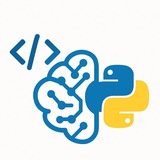9 machine learning concepts for ML engineers!
(explained as visually as possible)
Here's a recap of several visual summaries posted in the Daily Dose of Data Science newsletter.
1️⃣ 4 strategies for Multi-GPU Training.
- Training at scale? Learn these strategies to maximize efficiency and minimize model training time.
- Read here: https://lnkd.in/gmXF_PgZ
2️⃣ 4 ways to test models in production
- While testing a model in production might sound risky, ML teams do it all the time, and it isn’t that complicated.
- Implemented here: https://lnkd.in/g33mASMM
3️⃣ Training & inference time complexity of 10 ML algorithms
Understanding the run time of ML algorithms is important because it helps you:
- Build a core understanding of an algorithm.
- Understand the data-specific conditions to use the algorithm
- Read here: https://lnkd.in/gKJwJ__m
4️⃣ Regression & Classification Loss Functions.
- Get a quick overview of the most important loss functions and when to use them.
- Read here: https://lnkd.in/gzFPBh-H
5️⃣ Transfer Learning, Fine-tuning, Multitask Learning, and Federated Learning.
- The holy grail of advanced learning paradigms, explained visually.
- Learn about them here: https://lnkd.in/g2hm8TMT
6️⃣ 15 Pandas to Polars to SQL to PySpark Translations.
- The visual will help you build familiarity with four popular frameworks for data analysis and processing.
- Read here: https://lnkd.in/gP-cqjND
7️⃣ 11 most important plots in data science
- A must-have visual guide to interpret and communicate your data effectively.
- Explained here: https://lnkd.in/geMt98tF
8️⃣ 11 types of variables in a dataset
Understand and categorize dataset variables for better feature engineering.
- Explained here: https://lnkd.in/gQxMhb_p
9️⃣ NumPy cheat sheet for data scientists
- The ultimate cheat sheet for fast, efficient numerical computing in Python.
- Read here: https://lnkd.in/gbF7cJJE
🔗 Our Telegram channels: https://t.me/addlist/0f6vfFbEMdAwODBk
📱 Our WhatsApp channel: https://whatsapp.com/channel/0029VaC7Weq29753hpcggW2A
(explained as visually as possible)
Here's a recap of several visual summaries posted in the Daily Dose of Data Science newsletter.
- Training at scale? Learn these strategies to maximize efficiency and minimize model training time.
- Read here: https://lnkd.in/gmXF_PgZ
- While testing a model in production might sound risky, ML teams do it all the time, and it isn’t that complicated.
- Implemented here: https://lnkd.in/g33mASMM
Understanding the run time of ML algorithms is important because it helps you:
- Build a core understanding of an algorithm.
- Understand the data-specific conditions to use the algorithm
- Read here: https://lnkd.in/gKJwJ__m
- Get a quick overview of the most important loss functions and when to use them.
- Read here: https://lnkd.in/gzFPBh-H
- The holy grail of advanced learning paradigms, explained visually.
- Learn about them here: https://lnkd.in/g2hm8TMT
- The visual will help you build familiarity with four popular frameworks for data analysis and processing.
- Read here: https://lnkd.in/gP-cqjND
- A must-have visual guide to interpret and communicate your data effectively.
- Explained here: https://lnkd.in/geMt98tF
Understand and categorize dataset variables for better feature engineering.
- Explained here: https://lnkd.in/gQxMhb_p
- The ultimate cheat sheet for fast, efficient numerical computing in Python.
- Read here: https://lnkd.in/gbF7cJJE
#MachineLearning #DataScience #MLEngineering #DeepLearning #AI #MLOps #BigData #Python #NumPy #Pandas #Visualization
Please open Telegram to view this post
VIEW IN TELEGRAM
❤11👍8💯1
import numpy as np
arr = np.array([1, 2, 3, 4, 5])
print(np.std(arr))
1.4142135623730951
#74.
np.sum()Sums array elements over a given axis.
import numpy as np
arr = np.array([[1, 2], [3, 4]])
print(np.sum(arr))
10
#75.
np.min()Returns the minimum of an array or minimum along an axis.
import numpy as np
arr = np.array([5, 2, 8, 1])
print(np.min(arr))
1
#76.
np.max()Returns the maximum of an array or maximum along an axis.
import numpy as np
arr = np.array([5, 2, 8, 1])
print(np.max(arr))
8
#77.
np.sqrt()Returns the non-negative square-root of an array, element-wise.
import numpy as np
arr = np.array([4, 9, 16])
print(np.sqrt(arr))
[2. 3. 4.]
#78.
np.log()Calculates the natural logarithm, element-wise.
import numpy as np
arr = np.array([1, np.e, np.e**2])
print(np.log(arr))
[0. 1. 2.]
#79.
np.dot()Calculates the dot product of two arrays.
import numpy as np
a = np.array([1, 2])
b = np.array([3, 4])
print(np.dot(a, b))
11
#80.
np.where()Returns elements chosen from x or y depending on a condition.
import numpy as np
arr = np.array([10, 5, 20, 15])
print(np.where(arr > 12, 'High', 'Low'))
['Low' 'Low' 'High' 'High']
---
#DataAnalysis #Matplotlib #Seaborn #Visualization
Part 8: Matplotlib & Seaborn - Data Visualization
#81.
plt.plot()Plots y versus x as lines and/or markers.
import matplotlib.pyplot as plt
plt.plot([1, 2, 3, 4], [1, 4, 9, 16])
# In a real script, you would call plt.show()
print("Output: A figure window opens displaying a line plot.")
Output: A figure window opens displaying a line plot.
#82.
plt.scatter()A scatter plot of y vs. x with varying marker size and/or color.
import matplotlib.pyplot as plt
plt.scatter([1, 2, 3, 4], [1, 4, 9, 16])
print("Output: A figure window opens displaying a scatter plot.")
Output: A figure window opens displaying a scatter plot.
#83.
plt.hist()Computes and draws the histogram of x.
import matplotlib.pyplot as plt
import numpy as np
data = np.random.randn(1000)
plt.hist(data, bins=30)
print("Output: A figure window opens displaying a histogram.")
Output: A figure window opens displaying a histogram.
#84.
plt.bar()Makes a bar plot.
import matplotlib.pyplot as plt
plt.bar(['A', 'B', 'C'], [10, 15, 7])
print("Output: A figure window opens displaying a bar chart.")
Output: A figure window opens displaying a bar chart.
#85.
plt.boxplot()Makes a box and whisker plot.
import matplotlib.pyplot as plt
import numpy as np
data = [np.random.normal(0, std, 100) for std in range(1, 4)]
plt.boxplot(data)
print("Output: A figure window opens displaying a box plot.")
Output: A figure window opens displaying a box plot.
#86.
sns.heatmap()Plots rectangular data as a color-encoded matrix.
import seaborn as sns
import numpy as np
data = np.random.rand(10, 12)
sns.heatmap(data)
print("Output: A figure window opens displaying a heatmap.")
Output: A figure window opens displaying a heatmap.
#87.
sns.pairplot()Plots pairwise relationships in a dataset.
❤2
